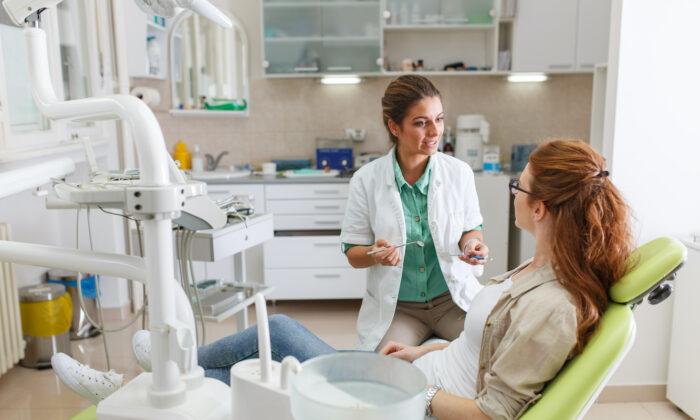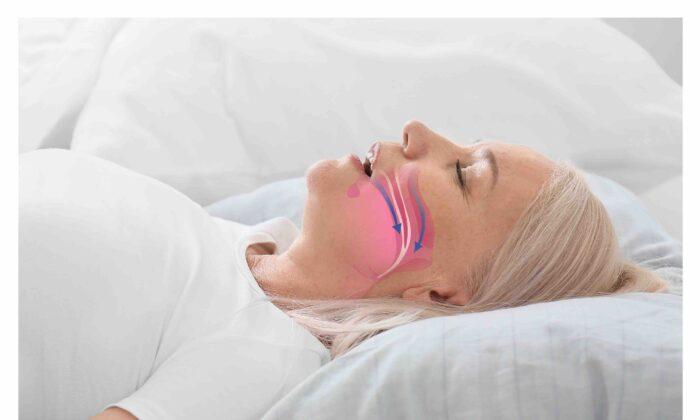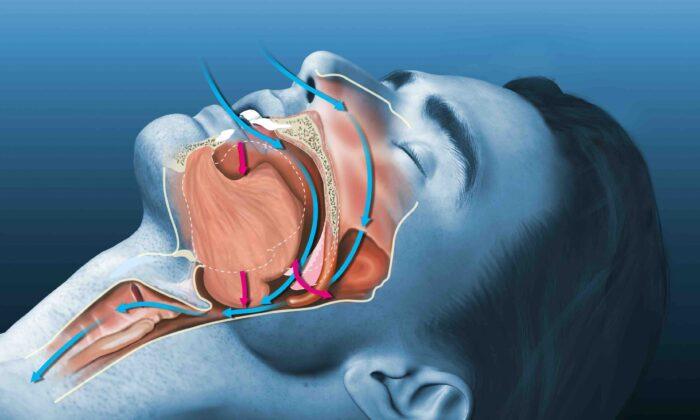Untreated dental caries is the most prevalent condition worldwide, affecting 2.4 billion people and 32 percent of the population.
Why? It’s because we just love those sweet, sticky eats and drinks. It would not be so bad if we immediately rinsed with water to help neutralize the resulting acids, but of course we never do that as we like the taste.
It is estimated that by the age of 10, children today will have consumed more sugar than the entire lifetime intake of their forebears 100 years ago. In the United States these days, 170 liters of soda are now individually consumed per year by those children.
What’s in Your Biofilm?
About 700 species of microorganisms can be found in the oral biofilm. The bacteria within these colonies become more diverse and complex and, with the growth of the colony, “bad” bacteria can then predominate (dysbiosis).With the collaboration and competition between various species in the biofilm, their behavior changes, and by working together they can become much more pathogenic.
Mature biofilms are extremely difficult to eradicate because the human immune system is not capable of penetrating mature biofilms. Even the most potent antibiotics we have today aren’t capable of killing the pathogens that are protected within biofilms.
The bacterial by-products produce an immune response from us, and we recruit white blood cells (WBC) to kill the invading bacteria. But instead, our response can cause localized inflammation in the surrounding gingiva (gums). The bacteria release chemicals to confuse the WBC, rendering them ineffective. The WBC then perish and release toxins of their own.
So, the gingiva become red and inflamed, and this can progress to periodontal disease, where the supporting structures are lost, and the teeth become loose.
The plaque that stays on your teeth can harden under or above your gum line into tartar (calculus). Tartar makes plaque even more difficult to remove and creates a shield for bacteria, becoming an easier environment for the anaerobic bacteria (those that prefer to exist in the absence of free oxygen). Professional cleaning is required to remove hard deposits on the teeth.
Toxic to the Body
This biofilm is toxic to the human body even in small amounts. It is made up of nearly a half-dozen neurotoxins, called lipopolysaccharides. When left unchecked within the body, these pathogens—bacteria, yeast, molds, and parasites—are able to freely multiply within this biofilm. The waste that is produced by these overgrown colonies reaches a breaking point, and the body can no longer process these toxins quickly enough.There is strong evidence of an association between periodontal disease and cardiovascular disease (CVD). Men younger than 50 years with periodontal disease demonstrate over 70 percent more risk to develop cardiovascular disease. Oral bacteria induce platelet aggregation, leading to thrombus formation. One or more periodontal pathogens are found in over 40 percent of the atheroma in patients with severe periodontal disease, and people with higher levels of bacteria in their mouths tend to have thicker carotid arteries, which is an indicator of CVD.
The response of the body to periodontal infection includes inflammatory mediators, which travel through the blood system causing harm to that system and to the heart.
Patients with diabetes have twice the risk of periodontal disease than those without the metabolic disorder, and treatment of periodontal disease appears to improve glycemic control.
Other associations with periodontal conditions include chronic kidney disease, pulmonary disease and lower airway infections, prostate disease, colon disease, pancreatic cancer, preterm pregnancy, erectile dysfunction, Alzheimer’s disease, and rheumatoid arthritis.
Returning Your Teeth to Good Health
As always in health matters, our reaction to the biofilm is patient specific: just how a specific person reacts to the pathogens compared with someone else. Some people who have heavy accumulations of deposits on their teeth can be very resistant, while others with very mild deposits have persistent problems.Disclosing solutions have been available for many years. These help to color the deposits on the teeth, making them visible for a patient, and thus point to where they may have missed with their cleaning.
Returning to the sugar component of the biofilm, the bacteria love the sugars even more than we do, and their waste products are acids. The neutral or alkaline environment in the mouth is lost as the pH drops in the biofilm. These acids are strong enough to demineralize the enamel on the teeth and form tiny holes: the first stage of dental caries.
After repeated episodes of these acid attacks, the enamel begins to break down, the tooth loses the ability to reinforce the calcium and phosphate ions in the teeth, and those ions diffuse out from those teeth. A cavitated lesion then forms (a loss of surface integrity).
Once areas of enamel are lost, the bacteria and acid can reach the next layer of your teeth, called dentin. This layer is softer than enamel and less resistant to acid. Dentin has tiny dentinal tubes that directly communicate with the pulp (nerve) of the tooth, resulting in sensitivity.
As the destruction continues, the bacteria and acid continue to eat through the teeth, moving next towards the pulp that contains nerves and blood vessels. The pulp becomes swollen and irritated from the bacteria. Because there is no place for the resulting swelling to expand inside of a tooth, the nerve is squeezed, causing pain.
Three-dimensional, pH mapping in the biofilm has shown areas as low as 3.5 pH in micro areas of the tooth surface, which is even lower than the damaging pH level of 5.5, where the tooth enamel begins to demineralize. Dentin and exposed root surfaces are susceptible at a pH of 6.2.
Fortunately, remineralization can occur. When the pH rises again—either by acid neutralization by our saliva after half an hour or so, or with a professional mouth rinse, or normal rinsing or cleaning—the tooth enamel can be restored from the calcium and phosphate in one’s saliva.
Fluoride present in plaque biofilm helps by the formation of fluorapatite when the hydroxyapatite crystals are dissolved by the acids. Now we have hydroxyapatite toothpastes to help instead of fluoride.
Thus the amount and composition of saliva influence the spread of dental caries. The saliva helps to neutralize the acid produced by bacteria, aids in the removal of food debris, and promotes the remineralization by acting as a reservoir of calcium, phosphate, and fluoride ions.
There is a difference between the level of acidity, the corrosive nature of certain drinks, and the type of acid present. The act of chewing sends a message to the brain for the parotid salivary gland to add buffering agents to your saliva, taking it from the resting level of pH 7 to pH 7.8. Thus, eating an acidic fruit is less harmful than just drinking the juice at that moment.
But then we have another sip of the sugar or acid drink or snack, and the pH goes back down once more, and so the attack is renewed.
Generally, we don’t drink as much water as we should, and so less buffering action is available. Two liters a day is recommended.
There are now phone apps that can tell you how much acid there is in various food substances and can tell you alternatives.
Dental caries at the beginning stage is barely visible. Later, white spots can be found on the tooth surface. This early stage of caries can be reversed by regular toothbrushing to remove caries bacteria in the biofilm. Special toothpastes are available to help recharge the calcium and phosphate that has been leached out. However, the critical factor is to stop the frequency of sugar consumption.
Therefore, dental caries can be considered a dietary-microbial disease that requires a cariogenic biofilm and regular exposure to fermentable carbohydrates (glucose, fructose, maltose, and sucrose) from the diet.
However, some diseases, such as anorexia, bulimia, heartburn or gastroesophageal reflux disease, can cause acid to flow into the oral cavity, also causing tooth erosion and, potentially, dental caries.
Risk factors include conditions that result in less saliva (xerostomia) such as diabetes mellitus, Sjögren syndrome, and some medications, including antihistamines and antidepressants. Smoking or chewing tobacco also promote a dry mouth.
There are over 600 medications that can contribute to dry mouth. Making it more complicated, combining medications compounds the effect. There is also a decrease in saliva with age.
When babies are given bedtime bottles filled with formula, juice, or other sugar-containing liquids, these beverages remain on their teeth for hours while they sleep, feeding decay-causing bacteria. This damage is often called “baby bottle tooth decay.” Similar damage can occur when toddlers wander around drinking from a sippy cup filled with these beverages.
Everyone has heard the recommendation to brush twice a day and use floss or interdental brushes when spaces are present. Even baking soda can help neutralize acids—one can just dip the toothbrush in it.
A healthy diet generally includes foods that can remove some of a new biofilm. One can feel the cleansing action of an apple—but rinse the mouth with water afterwards.
Chlorhexidine gluconate 0.12 percent is a periodontal antimicrobial agent one can use as a mouth rinse, but the taste may not be acceptable to everyone, and it is recommended to use it for a couple of weeks only. The incorporation of 2 percent arginine in sodium fluoride toothpaste enhances the antimicrobial effect against caries-generating bacteria (such as streptococcus mutans) when compared to sodium fluoride alone, while 8 percent arginine and calcium carbonate, with or without fluoride, can provide reductions in dentin hypersensitivity.
There are other aids such as chlorine dioxide mouth rinse and toothpaste, an over-the-counter mix that reduces the biofilm. There are other formulas one can get from the dentist.
Two teaspoons of baking soda in 8 ounces of water becomes an alkaline drink. If you can’t brush your teeth after eating, you can chew a sugar-free gum with the sugar substitute xylitol, which is a sugar alcohol, but bacteria cannot feed on it. Chewing a sugar-free gum stimulates saliva production and may partially neutralize the acid produced by bacteria. But don’t give xylitol to dogs!
There is now an antimicrobial filling material that can help with the restorations required at the gum line that have quaternary ammonia functional groups (disinfectants), which have no loss of antibacterial effect.
For dry mouth, artificial oral saliva products do not tend to last long in the mouth. Over-the-counter moisturizing gels may work better.
If tooth enamel is intact and not damaged, dental caries can be reversed and treated by remineralization of tooth enamel.
Arrested caries appears as a dark pigmentation with no further damage to the tooth tissues. This type of dental caries becomes static with the necessary attention to diet and home care.
Sealants will protect the pits and grooves, the most vulnerable areas on the top of the teeth, and are most often used on the permanent teeth of children. The ADA reports that sealants can reduce the risk of cavities by 80 percent.
Dental caries treatment, either by filling the tooth or by a crown, does not guarantee that you are protected from future caries. With poor oral hygiene, teeth often develop a so-called secondary caries. It is formed at the interface between the tooth and the filling or crown by the exact same process.
If left untreated, in the worst case, dental caries can lead to a dental abscess formation requiring endodontics (root filling) or tooth loss by extraction.
So, there are ways to keep a fresh healthy oral environment that looks and feels good and, as we are finding out more and more, will help protect us from other diseases and health conditions.







